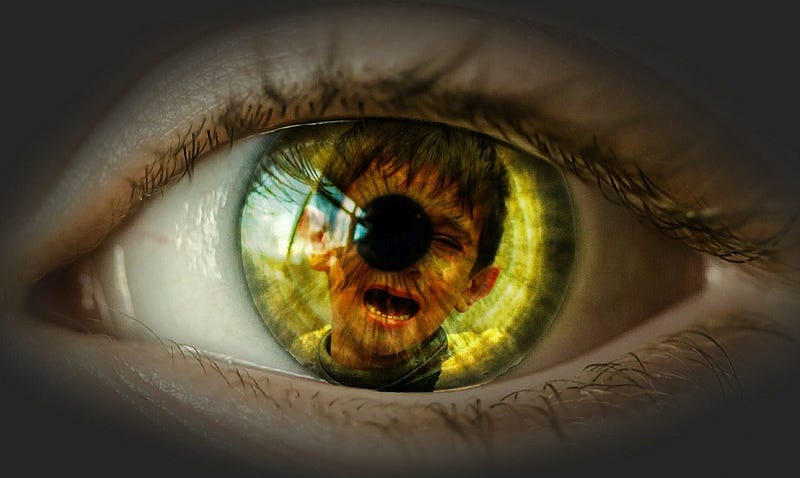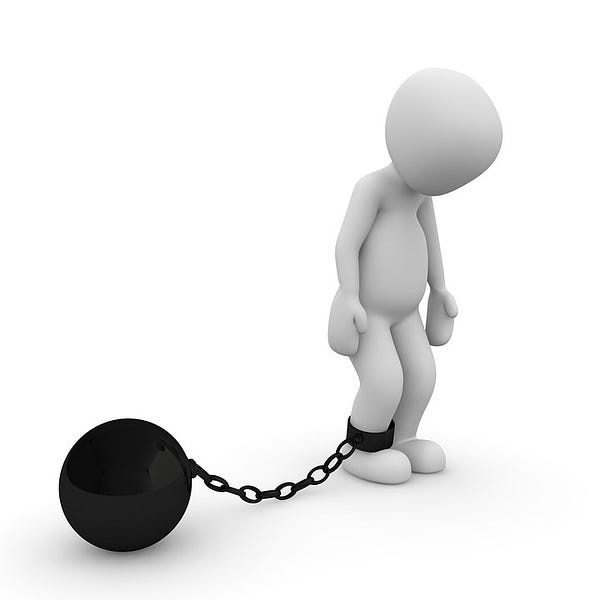David Finkelhor is a child sexual abuse preventionist and sociologist. Since 1977, he has contributed research into the psychology of how child sexual abuse happens and how it can be prevented. If you wish to read more about this pillar of abuse prevention, please do so. As this is a method of simplifying his study, The Prevention of Child Sexual Abuse (2012), I will not focus as much on the details. It is a fairly short read at 19 pages, but the average person will find it dry and boring even with a dictionary handy.
Reductions In Incidents Of Child Sexual Abuse (p. 16-17)
One surprising fact is that sexual violence against children has been on a downward trend since the 1990's, though the reason for this decline is unclear. The evidence for this decline comes both from self-report surveys and crime data trends. This downward trend was also associated with several other areas, such as reductions in general crime, teen pregnancy, teen suicide, and drug abuse. While one review mentions some possible reasons for these declines, there is no causal evidence that connects a solid reason for the downward trend in incidents of child sexual abuse.
His Review Of Current Strategies, By Topic
I said this was simplified, right? Well, here is a list for you, then, with the topics he covers and what he concludes about each. If you wish to know more about a particular topic, you can find the page number at the beginning of each topic. I am breaking down his reviews by broad category.
Criminal Justice Strategies
- Sex Offender Registration (p. 5-6)
- Mixed, but not promising: There has been inadequate research into sex offender registration policies, and many studies also include community notification, which is a separate topic. Crime has been in decline since 1990 or so, and it is unclear if the studies that have been done are finding drops in crimes because of registration, or because of the downward crime trend. Possibility for collateral consequences like stigma on offenders, negative effects, and limited effectiveness, but also a possibility for public confidence in authorities and a sense of safety (even if false).
- Sex Offender Notifications (p. 6)
- Limited studies and negative effects: You can always tell that more research is badly needed when a high-level researcher opens his remarks with saying, "No high-quality studies exist, and the correlational studies have mixed results." He observes that community notifications of sex offenders seems based on the myth of stranger danger, and that notifications are not favored by law enforcement and can significantly interfere with an offender's ability to rehabilitate and reintegrate into society.
- Background Checks (p. 6-7)
- False sense of risk: Surprisingly, Dr. Finkelhor observes that not only have there been limited research into the benefits and costs of background checks, but that doing so would be pointless because of how mainstream they are. He states that research is "badly needed" regardless because the true risk that individuals with backgrounds pose is unclear, and may be weeding out perfectly competent workers or employees who pose little to no risk.
- Sex Offender Residency Restrictions (p. 7)
- Note: These are restrictions that prevent sex offenders from living near day cares, schools, and other places frequented by children. Several studies done into their effectiveness (very limited since 2012) show little to no effect. One study done in 2007 in Minnesota found that not one of the 224 re-offenses studied would have been deterred by such policies. There appears to be studies that Finkelhor was not aware of when writing this summary.
- Supremely stupid: Not only have residency restrictions been enacted with no research into their effectiveness, the research that has been done on how offenses happen and the effect these policies have in theory shows that they are not worth adopting if the goal is to protect children. He points out that, "law enforcement and sex offender management authorities do not have the credibility or evidence base to temper or thwart misguided populist legislation on sex offender policy."
- Civil Commitment and Lengthening Sentences (p. 7-8)
- No evidence, does not reduce risk: While many different policies have lengthened the sentences of sex offenders and many states have formed procedures to essentially incarcerate sex offenders past their criminal sentence. The basis for these policies is a deterrent effect, and reducing those capable of committing new offenses, both of which have not been studied. It is noted that sentence length appears to have no relationship with the risk of reoffending, and that the evidence supporting these policies is extremely limited and unclear.
- Increasing Detection and Arrest (p. 8-9)
- Note: This is defined as when detection and arrests are increased on the law enforcement side of things, not to be confused with attempts to get victims to report abuse. The focus here is on more staff to detect and investigate abuse for criminal arrests and prosecutions, in the hope of deterring potential offenders and controlling existing offenders through the effects of being arrested.
- Mixed: He notes that no studies have tested for the presence of a deterrent effect on sexual offending against children, but that other studies do support deterrents for domestic violence, drunken driving, and robberies. Instead of deterring potential abusers, increased detection and arrests seem instead to deter caught abusers from acting again. It is noted that general research not specific to sexual abuse, "tends to confirm that offenders are deterred more by an increase of getting caught than and increase in the severity of the likely punishment."
- Mental Health Treatment (p. 9-10)
- Mostly positive: While many abusers lack access to adequate treatment, the research shows that treatment (particularly cognitive-behavioral therapy) reduces sexual re-offenses by up to 37%, which is significant because the likelihood of sexual re-offenses are already low. Because this research appears non-experimental in terms of its methodology, some experts are reserved in endorsing mental health treatment for adults and more research into this area is needed. While the strength of the research for adults is convincing, the research around juvenile offenders is even more so because it does use experimental designs.
- Community Reintegration and Supervision (p. 10)
- Promising, but needs research: Of note is Circles of Support and Accountability, an innovative program originating in Canada which provides a support system for offenders. The idea here is to focus on successfully reintegrating the offender through social support and employment opportunities. While Circles is noted to reduce reoffending by 70%, more research is needed.
Wrapping Up Criminal Justice
Dr. Finkelhor notes that tremendous energy has gone into criminal justice policies, and that the biggest weakness of this approach is that most molestations are not perpetrated by those with a record of sex crimes. In other words, "Even strategies that are 100 percent effective in eliminating recidivism among known offenders would reduce new victimizations only a little."
He does recommend four areas to improve upon: Detecting offenders not yet known to law enforcement, focus only on the high-risk offenders, develop better risk-assessment tools, and determine low-intensity strategies for youth, family, and other low-risk offenders.
Educational Programs (p. 11-14)
Here, Dr. Finkelhor overviews programs that teach children boundaries, dangerous situations and when to get help, safe/unsafe touch, along with the underlying message that victims are not to blame. These programs have drawn criticism: They may be too difficult for children to grasp, they may impede a child's trust in adults, and (as I have said before in other terms), "children cannot be reasonably expected to foil... adults bent on molesting them and... it is morally misguided and perhaps psychologically harmful to place the responsibility of preventing abuse on the shoulders of children."
Research shows that these programs can improve child-parent communication and that children do indeed learn the concepts being taught, particularly at younger ages. Research also shows very limited unintended consequences, and report positive outcomes like more positive self-esteem. Such educational programs have also been shown to reduce risk factors for victimization (in some studies but not others) and can increase bystander intervention. Much to my own surprise, there appears to be no basis for concerns that educational programs have negative consequences on children who experience these programs and are then abused: Instead, research supports the idea that such programs increase victim disclosure and reduce self-blame. Rather than causing more trauma to a victim, prevention programs seem to ease their burden.
Dr. Finkelhor recommends expanding these programs to include dating violence, statutory crimes, and new sexual crimes that are made possible by the internet.
Community Prevention of Offending (p. 14-15)
Here. Dr. Finkelhor overviews small-scale efforts to educate a small community to identify potential abusers with mental health help and an awareness that sexual behavior with children is wrong. Confidential phone numbers are provided in this approach. While there is limited evidence that these practices realistically prevent abuse, there is evidence that potential abusers come forward for help. At the very least, those with concerns about their behavior or thoughts are coming forward for help. It is mentioned that the current environment can reduce the ability of these programs to truly offer confidential help, and that alone can be a significant hindrance to these approaches as policies.
Separately, another approach is bystander intervention to detect and intervene when abusive situations are actually or potentially happening. There is more evidence supporting bystander intervention, and the research in that area is more developed. This research shows that bystander intervention can change community attitudes, reduce bullying among children, and has the potential to reduce peer abuse or dating violence.
Harm Mitigation (p. 15-16)
Harm mitigation is the use of counseling and family intervention to reduce the effects of abuse on victims, and the use of child advocacy centers to reduce the impacts of disclosure on victims through a variety of means. He specifically mentions that not all victims suffer the same level of harm or symptoms from sexual abuse, and he also mentions that there must be sensitivity in discovering the needs of a child victim and forming the most appropriate intervention. He points out that trauma-focused therapy is excellent for victim, and that child advocacy centers can point to or offer this particular therapy.
While there are other options mentioned, they are essentially miscellaneous tactics that do not have much attention in research. These options can be found on page 16.
Conclusion And Five Promising Areas For Study (p. 17-19)
Dr. Finkelhor concludes by indicating that there is no strong evidence pointing to a single strategy in preventing child sexual abuse, but proposes looking into several areas for further study and research:
- School-based child-focused educational programs
- Evidence-based policy and therapeutic practices around criminal justice
- Making cognitive-behavioral therapies standard and widely available
He closes his remarks by expressing optimism that with further research, we can make greater and more numerous accomplishments in reducing child sexual abuse.






